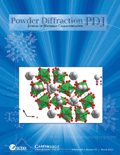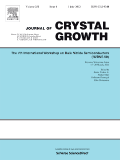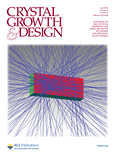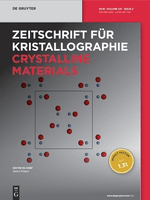
Acta Crystallographica Section B-Structural Science Crystal Engineering and Materials
Scope & Guideline
Unlocking the potential of crystal structures for practical applications.
Introduction
Aims and Scopes
- Crystal Structure Determination:
The journal publishes research on various techniques used for crystal structure determination, including X-ray diffraction, neutron diffraction, and electron diffraction, often highlighting advancements in methodology. - Materials Characterization:
Research articles frequently explore the characterization of new materials, examining their structural, thermal, magnetic, and electronic properties, which are critical for applications in various fields such as electronics, photonics, and catalysis. - Crystal Engineering:
The journal emphasizes crystal engineering, focusing on the design and synthesis of new crystalline materials with tailored properties through supramolecular interactions and functionalization. - Phase Transitions and Dynamics:
A significant body of work discusses phase transitions in materials, including thermal and pressure-induced changes, as well as dynamic behaviors, which are essential for understanding material stability and functionality. - Intermolecular Interactions:
The investigation of weak and strong intermolecular interactions, such as hydrogen bonding and halogen bonding, is a common theme, providing insights into the stability and reactivity of crystalline materials.
Trending and Emerging
- Advanced Electron Diffraction Techniques:
There is a growing emphasis on advanced electron diffraction methods, particularly 3D electron diffraction, which allows for the analysis of complex crystal structures and enhances the understanding of material properties. - Synthesis of Novel Functional Materials:
Research focusing on the synthesis of novel functional materials, including metal-organic frameworks (MOFs) and hybrid perovskites, is on the rise, highlighting their potential applications in energy storage, catalysis, and drug delivery. - Investigation of Radiation Effects:
An increased interest in studying the effects of radiation damage on crystal structures is evident, particularly in relation to their implications for material stability and performance in high-radiation environments. - Quantum Crystallography:
Emerging themes in quantum crystallography are gaining traction, with studies exploring the use of quantum mechanical methods to elucidate bonding and electronic properties in crystalline materials, paving the way for more accurate structural predictions. - Supramolecular Chemistry and Design:
The exploration of supramolecular synthons and their applications in crystal design is increasingly prominent, as researchers seek to leverage non-covalent interactions for developing new materials with tailored properties.
Declining or Waning
- Conventional Material Studies:
There has been a noticeable reduction in studies focusing solely on conventional materials without novel applications or properties. As the field evolves, researchers are increasingly seeking innovative materials that exhibit unique characteristics. - Static Structural Analyses:
Papers dedicated to static structural analyses without incorporating dynamic aspects or interactions are appearing less frequently. The trend is moving towards understanding materials in a more dynamic context, such as under varying temperature or pressure. - Basic Coordination Chemistry:
While coordination chemistry remains relevant, publications focusing on basic coordination compounds without substantial advancements in functional properties or applications are declining, as researchers prioritize studies that contribute to practical applications. - Traditional Organic Crystals:
Research on traditional organic crystals has seen a downturn, likely due to the increasing interest in hybrid organic-inorganic materials and metal-organic frameworks that offer enhanced properties.
Similar Journals

POWDER DIFFRACTION
Innovating Methodologies for a Deeper Understanding of MatterPOWDER DIFFRACTION, published by Cambridge University Press, is a pivotal journal focused on the evolving field of powder diffraction, which is crucial for researchers in condensed matter physics, materials science, and radiation studies. Established in 1986, this journal emphasizes the latest methodological advancements and applications in powder diffraction techniques, making it a comprehensive resource for professionals and students alike. With an ISSN of 0885-7156 and an E-ISSN of 1945-7413, it offers valuable insights into the characterizations of crystalline materials. Although currently not open access, the journal is highly regarded for maintaining rigorous peer review standards, reflecting in its rankings within the lower quartiles of relevant fields according to Scopus. Positioned within the United States and with distribution through Cambridge University Press, POWDER DIFFRACTION aims to foster innovation and knowledge exchange among the global scientific community, thereby solidifying its role as an essential platform for disseminating research findings from 1986 through to 2024 and beyond.

Microporous and Mesoporous Materials
Pioneering Research in Porosity CharacterizationMicroporous and Mesoporous Materials is a leading academic journal published by ELSEVIER, specializing in the field of porosity characterization and applications of microporous and mesoporous materials. With an impactful Q1 ranking in various categories, including Chemistry, Condensed Matter Physics, and Materials Science, this journal serves as a vital resource for researchers, professionals, and students focused on advancing the understanding and application of these materials. Established in 1998 and set to continue its influence until 2024, the journal's rigorous peer-review process ensures the dissemination of high-quality research findings. Additionally, its commitment to open access publishing broadens accessibility, fostering an inclusive community dedicated to innovation in nanoscience, materials physics, and engineering. The journal's Scopus rankings highlight its prestigious standing, placing it among the top percentile within pertinent fields. For those engaged in cutting-edge research or education within these sectors, Microporous and Mesoporous Materials remains an essential journal for current advancements and insights.

MATERIALS CHEMISTRY AND PHYSICS
Pioneering Discoveries in Condensed Matter PhysicsMATERIALS CHEMISTRY AND PHYSICS is a leading peer-reviewed journal published by Elsevier Science SA, focusing on the intersection of materials science and condensed matter physics. With an esteemed impact factor and a distinguished reputation in its field, this journal holds a Q1 ranking in Condensed Matter Physics and a Q2 ranking in miscellaneous Materials Science categories as of 2023. Spanning over three decades since its inception in 1983, it provides a vital platform for researchers, professionals, and students to disseminate cutting-edge findings and innovations in materials characterization, properties, and applications. The journal is indexed in Scopus, boasting impressive rankings that reflect its commitment to publishing high-quality research. Although it does not currently offer an Open Access option, it remains an essential resource for those seeking to stay at the forefront of materials chemistry and physics.

CRYSTAL RESEARCH AND TECHNOLOGY
Fostering Collaboration in Crystal ResearchCRYSTAL RESEARCH AND TECHNOLOGY, published by WILEY-V C H VERLAG GMBH, is a distinguished journal in the fields of Chemistry, Condensed Matter Physics, and Materials Science, with over five decades of continuous publication from 1966 to 2024. With its ISSN 0232-1300 and E-ISSN 1521-4079, the journal serves as a crucial platform for disseminating significant research findings, theoretical advances, and technological innovations related to crystal growth, structure, and properties. Holding a Category Quartile ranking of Q3 in the 2023 assessments across its disciplines, CRYSTAL RESEARCH AND TECHNOLOGY is recognized for its contribution to the scientific community, making it an essential resource for researchers, professionals, and students alike. While this journal is not open access, its robust publishing framework ensures that high-quality peer-reviewed articles remain accessible to a global audience. The importance of this journal lies in its commitment to advancing knowledge and fostering collaborations in crystallography and related fields.

PHYSICS AND CHEMISTRY OF MINERALS
Advancing Insights into Mineral InteractionsPHYSICS AND CHEMISTRY OF MINERALS, published by SPRINGER, is a premier journal dedicated to advancing the understanding of the physical and chemical properties of minerals, their interactions, and their significance in various geological processes. With an ISSN of 0342-1791 and an E-ISSN of 1432-2021, this journal serves as a vital resource for researchers and professionals in geochemistry and petrology, as well as materials science. Reflecting the journal's commitment to quality scholarship, it has achieved Q3 rankings in both Geochemistry and Petrology, and Materials Science (miscellaneous) categories. Established in 1977 and continuing through 2024, the journal has consistently provided a platform for high-impact research, fostering collaboration and innovation in the field. Located in Germany and reaching a global audience, PHYSICS AND CHEMISTRY OF MINERALS is instrumental for students, academics, and industry experts looking to stay at the forefront of mineral research and applications.

JOURNAL OF CRYSTAL GROWTH
Unveiling the Secrets of Crystal FormationJOURNAL OF CRYSTAL GROWTH, published by Elsevier, stands as a vital platform in the realm of condensed matter physics, inorganic chemistry, and materials chemistry. With its inception dating back to 1967 and a promising convergence continuing through 2024, this journal encompasses the latest research and advancements in crystal growth phenomena. Although it does not currently offer open access options, its rigorous peer-review process ensures high-quality scholarly contributions that are essential for researchers, professionals, and students alike. The journal's solid standing is reflected in its Scopus rankings, with placements in the third and second quartiles across relevant fields and notable percentiles. Operating from the heart of the Netherlands, JOURNAL OF CRYSTAL GROWTH not only fosters academic dialogue but also enhances the understanding of crystallization processes crucial for materials engineering and applied sciences, making it an indispensable resource for anyone dedicated to exploring the intricacies of crystal growth.

CRYSTAL GROWTH & DESIGN
Innovating the Future of Materials ScienceCRYSTAL GROWTH & DESIGN, published by the American Chemical Society, is a premier journal dedicated to the interdisciplinary study of materials science, condensed matter physics, and miscellaneous chemistry. With an ISSN of 1528-7483 and E-ISSN of 1528-7505, this journal provides a vital platform for the dissemination of innovative research findings from 2001 through 2024, reflecting the dynamic advancements in crystal growth and design methodologies. It is recognized for its impact in the field, earning a distinguished placement in the Q2 quartile across categories of Chemistry, Condensed Matter Physics, and Materials Science for 2023. Researchers engaging with CRYSTAL GROWTH & DESIGN will find a wealth of peer-reviewed articles encompassing cutting-edge experimental techniques, theoretical frameworks, and application-oriented studies. Although not an open-access journal, it remains a critical resource for academics, professionals, and students aiming to enhance their understanding of crystal growth processes and material functionality, with Scopus rankings reflecting its reputable authority within the scientific community.

Physics and Chemistry of Solid State
Innovating the Future of Materials and Condensed Matter PhysicsPhysics and Chemistry of Solid State is a distinguished open access journal published by Vasyl Stefanyk Precarpathian National University in Ukraine, dedicated to advancing research in the fields of condensed matter physics, materials science, and physical and theoretical chemistry. Since its inception in 2000, the journal has provided a platform for the dissemination of innovative ideas and original research findings, contributing significantly to the global scientific community. With a variety of access options, it facilitates the sharing of knowledge and collaboration among researchers worldwide. The journal has garnered recognition with respectable rankings in Scopus, positioning itself among the significant publications in its domain, particularly noted for its contributions to materials science and condensed matter physics. As it moves through its converged years from 2018 to 2024, Physics and Chemistry of Solid State aims to foster interdisciplinary dialogue and prepare the next generation of scientists to tackle complex challenges in solid-state research.

Zeitschrift fur Kristallographie-Crystalline Materials
Unveiling the Secrets of Crystalline MaterialsZeitschrift für Kristallographie-Crystalline Materials is a prestigious academic journal published by Walter de Gruyter GmbH, focusing on the intricate field of crystallography and its applications within condensed matter physics, inorganic chemistry, and materials science. Established in Germany, this journal spans a rich history from its inception in 1930 to its convergence years from 2012 to 2024, presenting cutting-edge research and developments in crystalline materials. With an impact factor reflective of its critical role within its field—ranking Q3 in the prestigious quartiles for 2023 across multiple categories—this journal serves as an essential platform for researchers, professionals, and students seeking to expand their knowledge and contribute to the advancement of crystalline materials. While currently not offering open access, the journal remains committed to disseminating high-quality, peer-reviewed articles that inspire innovation and collaboration within the scientific community.

IUCrJ
Bridging Knowledge Across Scientific DisciplinesIUCrJ, published by the International Union of Crystallography, is a leading open-access journal dedicated to advancing knowledge in the fields of Biochemistry, Chemistry, Condensed Matter Physics, and Materials Science. Since its inception in 2014, IUCrJ has quickly established itself as a prestigious platform for high-quality research, achieving a remarkable record as a Q1 journal across its categories in 2023. With an increasing impact in the scientific community, evidenced by impressive Scopus rankings, IUCrJ offers unparalleled access to groundbreaking discoveries and methodologies that contribute to the understanding and application of crystallography in various disciplines. The journal’s commitment to open access ensures that research is readily available to a global audience, fostering collaboration and innovation in the scientific community. IUCrJ is an essential resource for researchers, professionals, and students aiming to stay at the forefront of crystallographic research and its interdisciplinary applications.